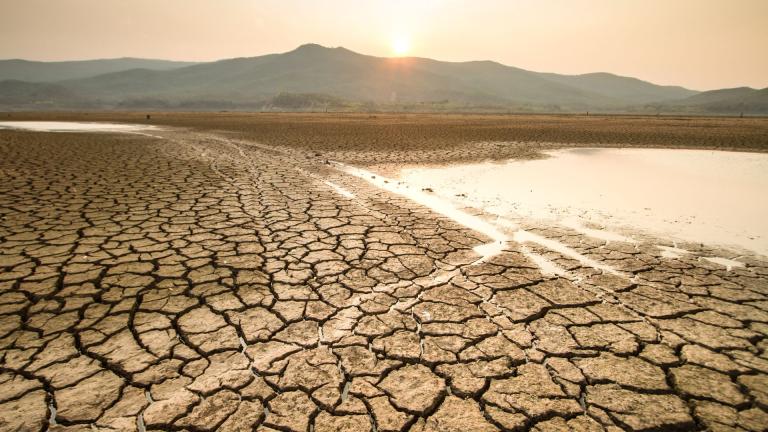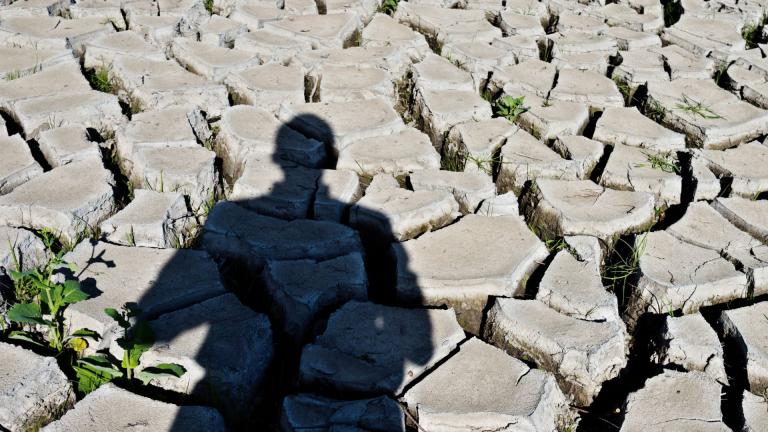Major international drought conference seeks to increase resilience
As climate change continues to exacerbate drought risks globally, a major international conference will seek to increase resilience to one of the world’s most deadly hazards, which frequently attracts little attention until it is too late.
- Drought is one of the deadliest climate-related hazards
- More integrated drought management systems are needed
- Current political will, policy design, and implementation are insufficient
- Building drought resilience is a “whole-of society" mission
- Drought action forms an integral part of Early Warnings for All

Experts, policymakers, and practitioners will gather at the headquarters of the World Meteorological Organization at the Drought Resilience +10 Conference – so called because it marks a decade since the High-Level Meeting on National Drought Policy.
The conference provides an opportunity for global stakeholders to reflect on a decade of advancements in drought preparedness, response, and adaptation while exploring new ways to turn knowledge into practical solutions that can help countries become more drought-resilient.
“Droughts are an insidious and dangerous climate-related hazard, which undermines food human security and is a major cause of internal displacement in worst-hit countries. It can wreak a devastating impact on the environment and economies and reverse progress in sustainable development,” said WMO Secretary-General Celeste Saulo.
“We need sustainable solutions, based on scientific knowledge and tailored policies that promote integrated drought management practices and policies. We have the knowledge and the tools but we all too often lack the necessary political will and financial investment to build drought-resilient societies,” said Celeste Saulo.
The Conference will focus on the escalating drought-related risks posed by climate change and increasing structural vulnerabilities in many societies. It will examine how to accelerate the shift in approach from a reactive, crisis-driven one to a more proactive approach, which leverages climate services such as seasonal forecasts, and anticipatory action tools, including innovative financing mechanisms.
The conference will examine drought monitoring and forecasting advances and will discuss how to strengthen drought monitoring for early warnings for food security and health, and how to embed policies into the international Early Warnings for All initiative. There will be a heavy emphasis on case studies and community-led actions.
It will also look at scientific and policy-making developments, including progress in satellite technology and artificial intelligence tools, which bring new perspectives to forecasting, monitoring and impact assessment.
Drought is not a new phenomenon and has historically occurred as a consequence of natural climatic variability. However, climate change is intensifying the water cycle. This brings more intense rainfall and associated flooding, as well as more intense drought in many regions, according to the Intergovernmental Panel on Climate Change.
Changes in land use and land cover are compounding the challenge.
"Healthy economies depend on healthy lands. We must urgently recognize that our land and natural systems are allies in our responses to climate change and drought, and we must leverage them for integrated, proactive drought management. Drought Resilience +10 is a crucial opportunity to exchange knowledge and build momentum for UNCCD COP16, which will take place in Riyadh, Saudi Arabia, from 2 to 13 December", remarked the UNCCD Deputy Executive Secretary Andrea Meza.

State of Climate
Between 1970 and 2019 drought caused approximately 650,000 reported deaths. Poverty and poor land use can increase vulnerability to drought and intensify their impact, according to the WMO Atlas of Mortality and Economic Losses from Weather, Climate and Water Extremes.
In Africa, 1 839 disasters attributed to weather, climate and water extremes were reported between 1970 and 2021. They caused 733 585 reported deaths and US$ 43 billion in economic losses. Droughts accounted for 95% of reported deaths.
WMO State of the Climate reports report on the occurrence and impact of droughts.
For instance, a prolonged La Niña event led to five consecutive failed rainfall seasons in the Horn of Africa, culminating in a massive humanitarian, food security and displacement crisis in 2023 in Ethiopia, Kenya, and Somalia.
With the transition to El Niño in 2023-2024, Southern African nations became the focus of the drought crisis – especially countries like Zimbabwe, Zambia, and Malawi.
Enhanced drought resilience
Despite the challenges, progress has been made in integrated drought management.
The Integrated Drought Management Programme (IDMP) is a joint initiative between WMO and the Global Water Partnership (GWP), which works with over 45 partners to support countries and states, by providing them with policy and management guidance for handing droughts.
There are a number of success stories. These examples underscore the importance of strong drought management policies and early warning systems. They highlight the need for governments to adopt forward-looking approaches that integrate climate data and resource management into their drought preparedness strategies.
Brazil’s Northeast region, which historically faces frequent and severe droughts, provides a prime example of the benefits of proactive drought management policies. Recent policy responses focused on developing a comprehensive drought management system that integrates early warning systems, sustainable water management practices, and integration of climate change scenarios into infrastructure planning. Coordination between federal, state, and local governments was also enhanced to facilitate timely and efficient responses.
Similarly, in the USA, a proactive approach helped mitigate the effects of a severe water shortage in the State of Washington in 2024. With water supplies falling below 75% of normal levels in April, the state issued an early emergency drought declaration, unlocking funding for drought relief measures. This early action allowed communities and public entities to access funding for drought relief in advance, giving them time to implement mitigation strategies such as securing alternative water supplies and preparing for reduced irrigation.

Conference themes
Discussions at DR+10 will focus on nine topics, each addressing key aspects of drought management and reflecting the central challenges and opportunities for building drought resilience globally.
It will include national and regional case studies
These include:
- Drought resilience and global mechanisms
- Drought risk governance: the regional, national and local challenges
- Drought monitoring, impact assessment and forecasting
- From policies to action
- Ecosystems
- Social inclusion and climate justice
- Drought finance
- Public-private civil society partnerships
- Health
There will be a high-level closing session: Turning Drought Resilience Challenges into Action.
The Conference's final declaration will include recommendations for countries to accelerate drought resilience efforts over the next decade. It will focus on policy implementation, drought resilience in countries’ preparedness plans, and adaptation strategies. It will also seek to mobilize resources to support vulnerable countries facing drought-related challenges.
The outcomes of the Conference will inform the global drought community as well as the high-level discussions at the 16th session of the Conference of the Parties (COP-16) of the United Nations Convention to Combat Desertification (UNCCD) in Riyadh in December 2024.

Notes to Editors
The World Meteorological Organization (WMO) is a specialized agency of the United Nations responsible for promoting international cooperation in atmospheric science and meteorology.
WMO monitors weather, climate, and water resources and provides support to its Members in forecasting and disaster mitigation. The organization is committed to advancing scientific knowledge and improving public safety and well-being through its work.
For further information, please contact:
- Clare Nullis WMO media officer cnullis@wmo.int +41 79 709 13 97
- WMO Strategic Communication Office Media Contact media@wmo.int

